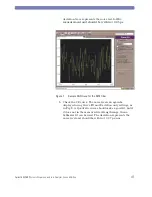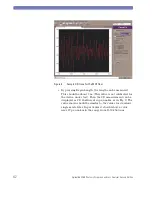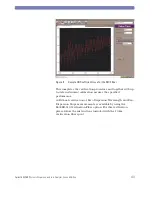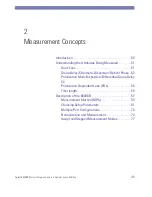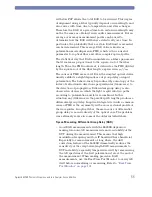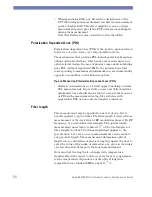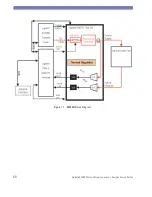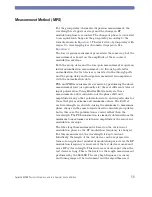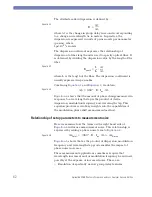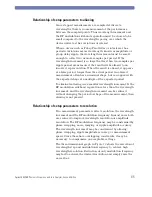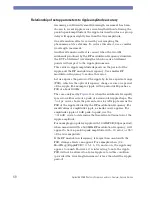
Agilent 86038B Photonic Dispersion and Loss Analyzer, Second Edition
53
The zero-dispersion wavelength (usually called lambda zero) is
the wavelength at which the slope of the group delay versus
wavelength curve equals zero.
The dispersion slope at lambda zero is in turn the slope of the
dispersion curve at that wavelength. The slope at lambda zero is
used by system designers to estimate the dispersion at
wavelengths away from lambda zero.
Optical components such as wavelength filters also have
dispersion, due to the mathematical relationship between the
dependence on wavelength of transmission amplitude and
phase. Often the GD dependence on wavelength over a pass-
band is not conveniently described by a single slope value, CD,
and is better described by the GD variation range within the
pass-band. In the case of a dispersion compensating device, the
deviation of GD from the GD spectrum of the desired CD value,
is a useful parameter often called GD ripple.
Similarly, the deviation of the Optical Phase from design is
valuable to evaluate a device. The Optical Phase, as the
frequency integral of GD (multiplied by -1), is ideally linear in
optical frequency for a device with no dispersion. The negative
slope of optical phase is the absolute group delay and is
proportional to the length of the optical path. Usually only
relative phase is of interest and optical phase is reported with
an arbitrary constant offset.
Tips on Measuring Group Delay (GD)
• In the swept mode, over-sampling the GD spectrum by using
a small wavelength step than required for the desired
wavelength resolution can be used together with smoothing
at that resolution to reduce the noise. But if the wavelength
step is too large, smoothing will remove wavelength-
dependent details from the spectrum.
•
For the most accurate GD measurements, the measurement should be
made with polarization dependence (GD/CD + DGD/PDL). This allows
any DGD and PDL effects to be averaged out. The lowest noise can be
achieved with high modulation frequency and low IF bandwidth
frequency.
Summary of Contents for 86038B
Page 1: ...Agilent 86038B Photonic Dispersion and Loss Analyzer User s Guide ...
Page 4: ...4 ...
Page 20: ...20 Agilent 86038B Photonic Dispersion and Loss Analyzer Second Edition ...
Page 34: ...34 Agilent 86038B Photonic Dispersion and Loss Analyzer Second Edition Figure 2 b Rear Panel ...
Page 78: ...78 Agilent 86038B Photonic Dispersion and Loss Analyzer Second Edition ...
Page 92: ...92 Agilent 86038B Photonic Dispersion and Loss Analyzer Second Edition ...
Page 202: ...202 Agilent 86038B Photonic Dispersion and Loss Analyzer Second Edition End Sub ...
Page 348: ...348 Agilent 86038B Photonic Dispersion and Loss Analyzer Second Edition ...
Page 349: ......



